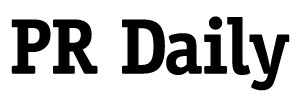Pitching the Super Bowl remotely: Lessons from 3 years of success
You can make an impact even from afar.

Sterling Randle is account lead for Digital Sport by Hot Paper Lantern .
Every year, the week leading up to the Super Bowl is a frenzy of media activity. Thousands of journalists, broadcasters and analysts flood Radio Row, covering every possible angle of the game. For PR professionals, it’s one of the most competitive and high-stakes environments in which to pitch a story. But for the past three years, I’ve been doing just that — securing top-tier interviews for our clients — without ever setting foot on media row.
If there’s one thing I’ve learned from doing this work remotely, it’s that getting media coverage isn’t just about having a great spokesperson to offer — it’s about persistence, adaptability and understanding what producers and hosts need. Obviously, this pitching would be easier done in person, where you have the ability to physically approach producers and hosts. However, in the three years I’ve been pitching the Super Bowl remotely, I’ve learned to refine my approach to focus on three essential principles: following up relentlessly, tailoring every pitch, and staying flexible.
- Follow up (again and again)
A lack of response doesn’t always mean “no.” More often than not, it just means your email could’ve been buried under a mountain of others, opened and quickly forgotten. Producers and reporters are juggling dozens of pitches and schedule changes, all in a remote environment. Even if they’re interested, they might not have time to reply right away. This is why following up is critical.
However, there is a fine line between persistence and annoyance. It’s not a good idea to send a pushy email that makes you seem desperate. Instead, be persistent in a way that makes their job easier. If I don’t get a response to my initial email, I’ll send a quick, polite follow-up 24-48 hours later.
Timing also plays a huge role. Sometimes producers can be more responsive at odd hours — weekends before big events, early mornings or even late at night. This year, I noticed many responded on the Saturday and Sunday before Super Bowl week. So, I stayed close to my phone, ready to reply in real time. That small adjustment helped me lock in interviews that might have otherwise slipped away. I also switch tactics — maybe a short text (if I saw a phone number in an email signature) or a DM on X if I noticed that the person was especially active on the platform.
The number of times I’ve received responses along the lines of, “Sterling! Thanks for following up — I meant to get back to you,” is proof that people appreciate the reminder.
- Make every pitch personal (because generic pitches get ignored)
If you’re copying and pasting the same pitch to every outlet, you’re setting yourself up for failure. Each media outlet has a specific audience, and the more relevant your pitch is to them, the better your chances are of getting booked. What works for a station in Los Angeles won’t work for one in Boston.
For Super Bowl week, this meant taking a targeted approach. A sports radio station in Denver didn’t just want to hear about the Super Bowl – they also wanted insights on the Broncos. With the team outperforming its preseason expectations, their audience was more connected to the team’s progress and yearned for projections for next year. If our clients had strong opinions, facts and stats on Denver’s year, I made sure that was front and center in my pitch.
It’s also important to recognize how different outlets structure their content. Some want deep-dive analytics while others prefer a quick, conversational take. The more you can match what you are offering to their editorial style, the more likely they are to say yes.
- Stay flexible (because nothing goes as planned)
Super Bowl media week is controlled chaos. Schedules shift constantly, guests cancel at the last minute, and new opportunities can pop up out of nowhere. If you’re not ready to adapt on the fly, you’re going to miss out.
This year, we streamlined our scheduling with a shared Google Calendar with my clients on site. If a producer needed a guest on short notice, I could confirm an open time slot within seconds. That kind of responsiveness makes a huge difference when everyone is working under tight deadlines.
Being flexible also means adapting to how people prefer to communicate. Some producers live in their inboxes, while others barely check emails. If someone got back to you but you’re waiting on final confirmation, don’t be afraid to use their cell if it was listed in their email signature. A quick text message can often garner a faster response than an email.
At the end of the day, success in PR comes down to more than just securing coverage—it’s all about building trust. Media members remember the people who make their jobs easier. If you’re responsive, easy to work with, and deliver great guests, it can open doors to develop deeper relationships. The Super Bowl is the last time we talk to some of these people before the next season starts, so this is our opportunity to leave a good impression. For the last three years, we’ve proven that you don’t have to be on the ground at the Super Bowl to make an impact. You just have to be strategic, persistent, and ready to go when opportunity knocks.






